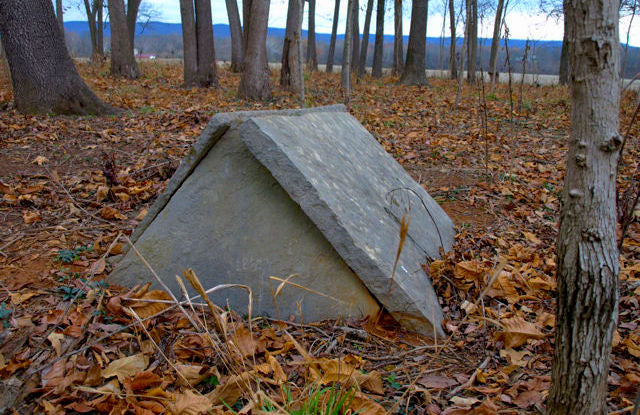
 They go by a couple different names—tent graves and comb graves—the prior making perfect sense because they're shaped like little tents, the latter a mystery because they don't look at all like combs. Made from rough stone, sometimes paired with metal or brick, they're just low enough to overlook and just high enough to send you sprawling atop the resting place of some Civil War veteran.
They go by a couple different names—tent graves and comb graves—the prior making perfect sense because they're shaped like little tents, the latter a mystery because they don't look at all like combs. Made from rough stone, sometimes paired with metal or brick, they're just low enough to overlook and just high enough to send you sprawling atop the resting place of some Civil War veteran.You can find tent graves in other areas too, but there's a concentration in west Tennessee, where John and Retta Waggoner explore. Self described "grave walkers," they started their macabre hobby while searching for the burial places of ancestors. By the time they covered all of the cemeteries near their Smith County home, they were hooked. They've walked through graves across Tennessee, up into Kentucky, down into Florida and Arkansas, all over.
When they share pictures of tent graves, everyone's first question is, of course, why such an unusual shape?
The Waggoners say that the most common reason cited is livestock. While we have motorized mowers today, graveyard grass used to be clipped the old fashioned way, by goats, sheep, and cows. To keep animals from sinking into soft, grave-top soil (or being grabbed by a restless corpse) tent graves were built.

"In Overton County the sides are often supported by an iron rod," the Waggoners say, explaining variations in the graves, "whereas in the White County area they are supported by a triangular end section of stone inserted underneath."
This makes me wonder—have you ever run across these unusual markers? If so, how were they made? And, as importantly, did they send you sprawling during your graveyard stroll?














